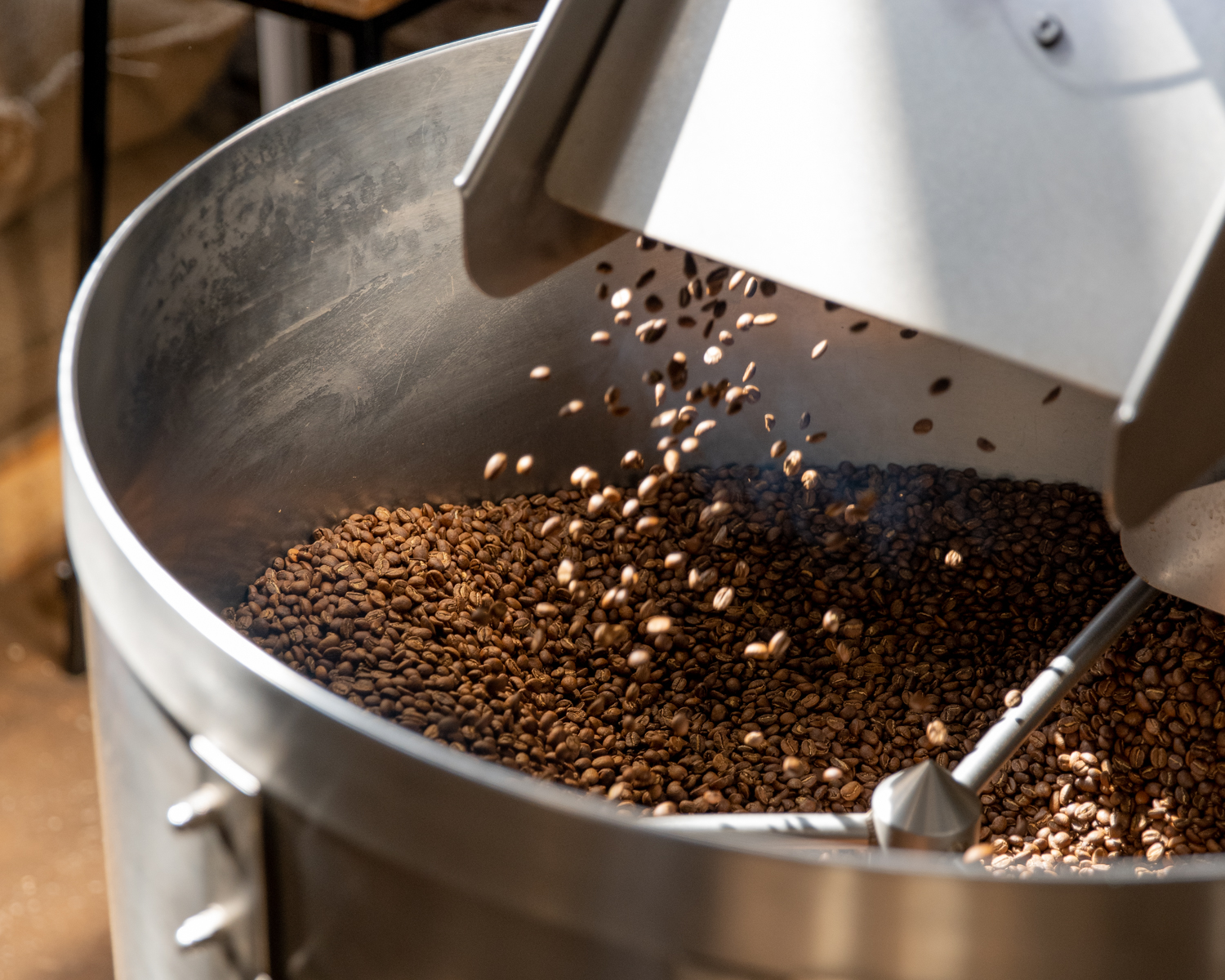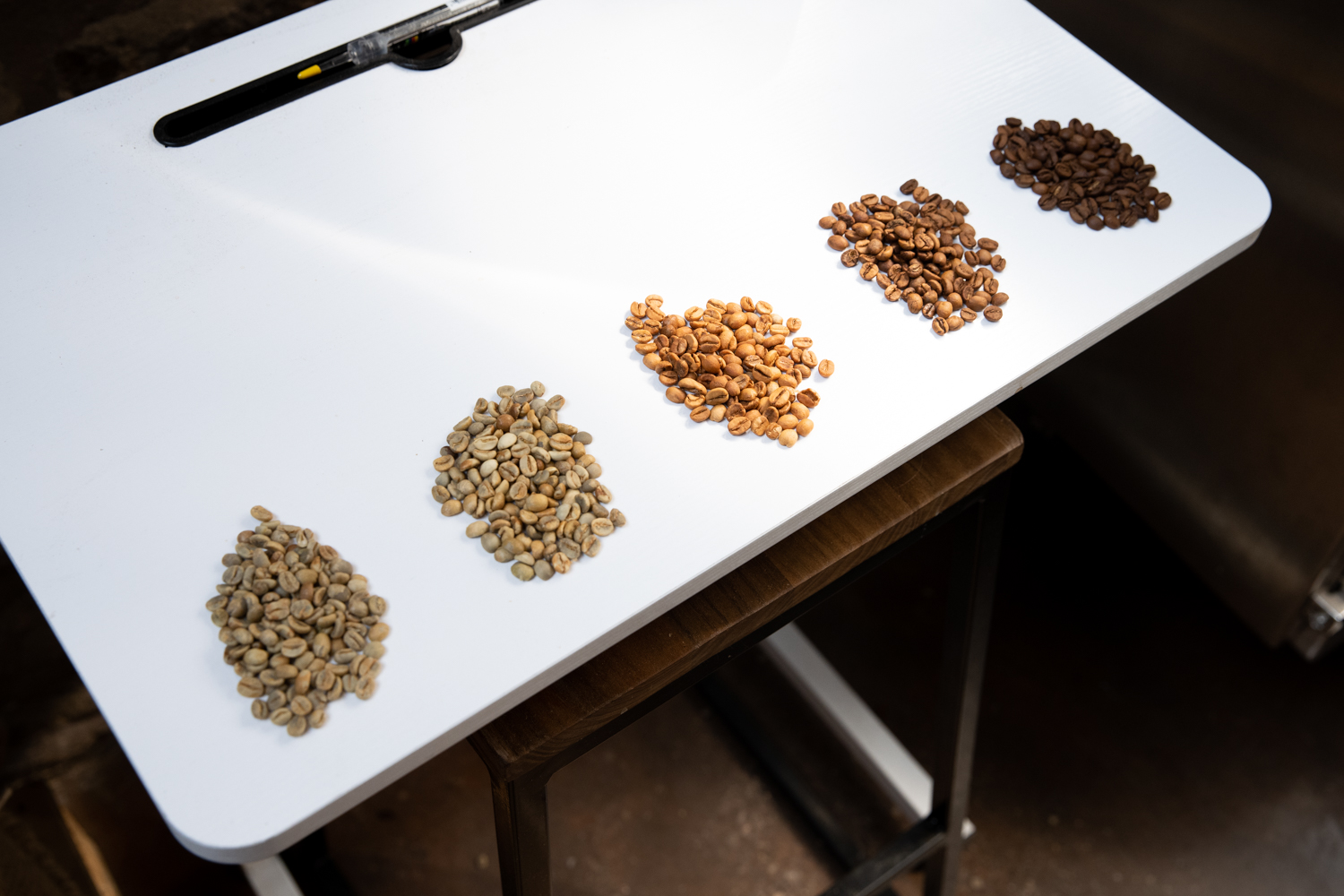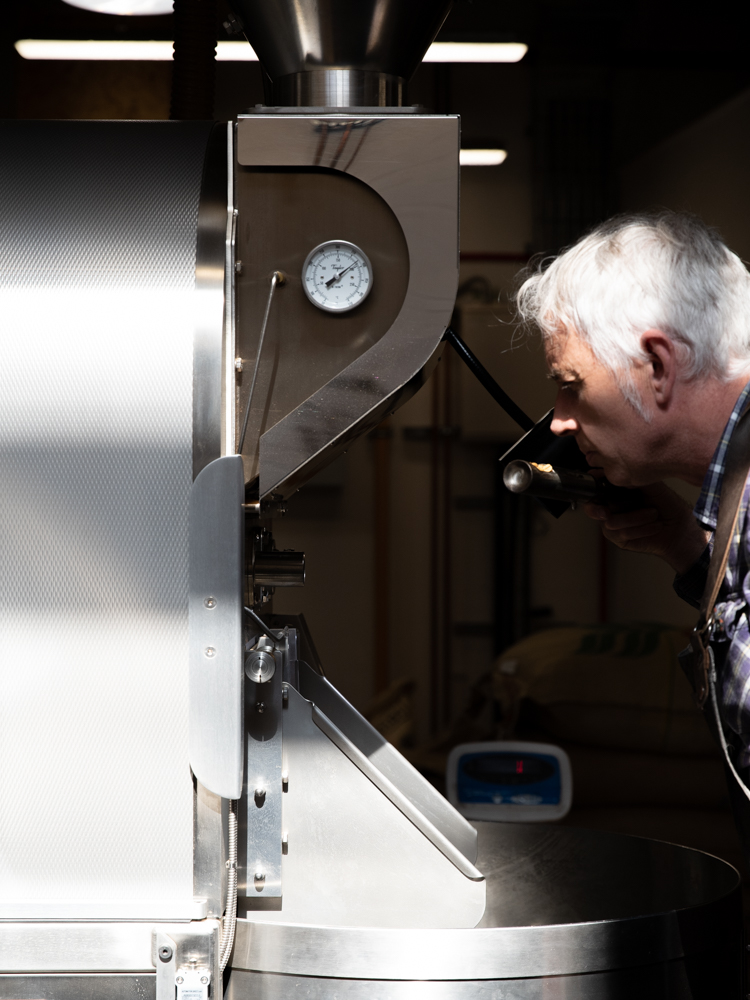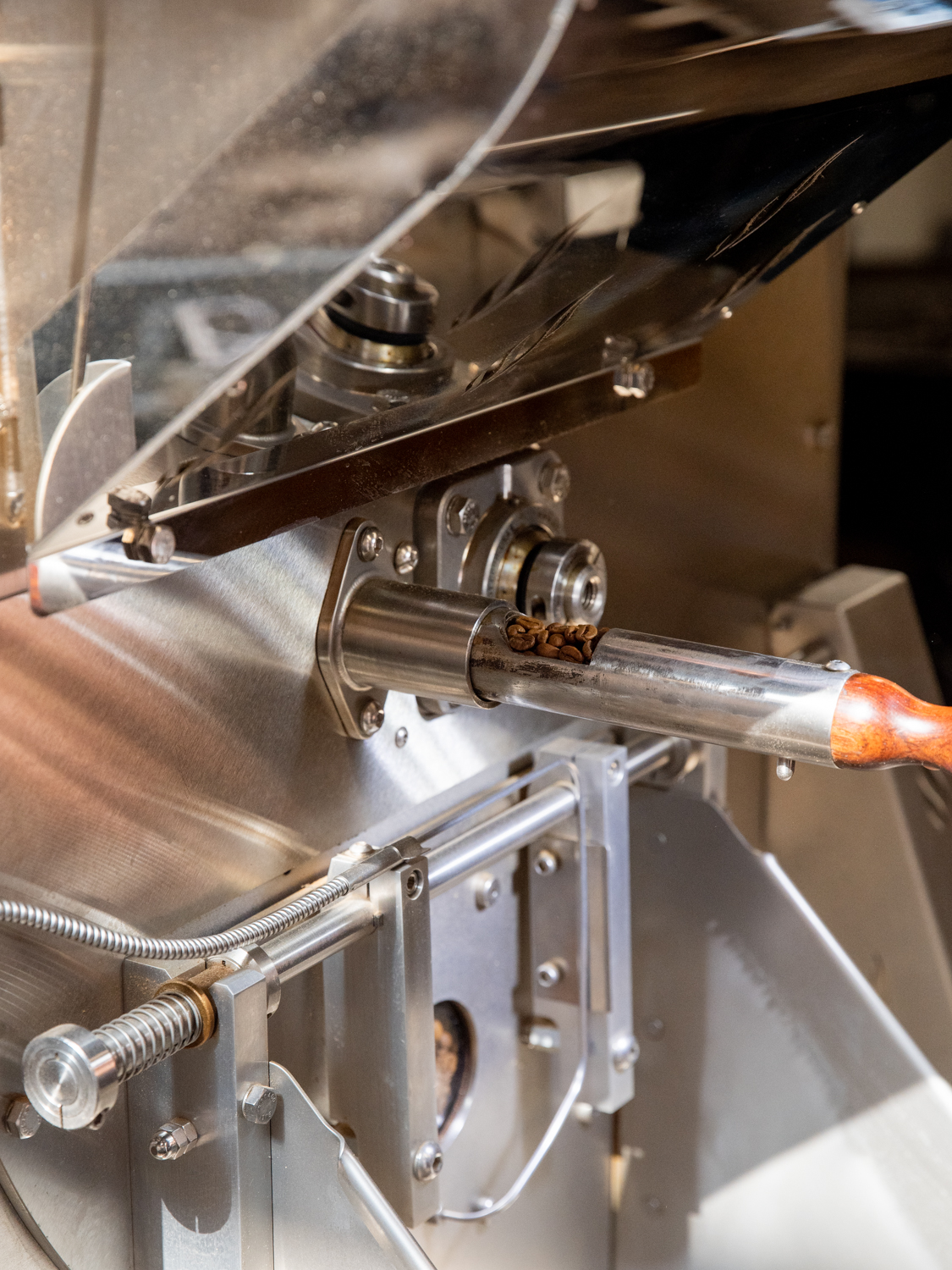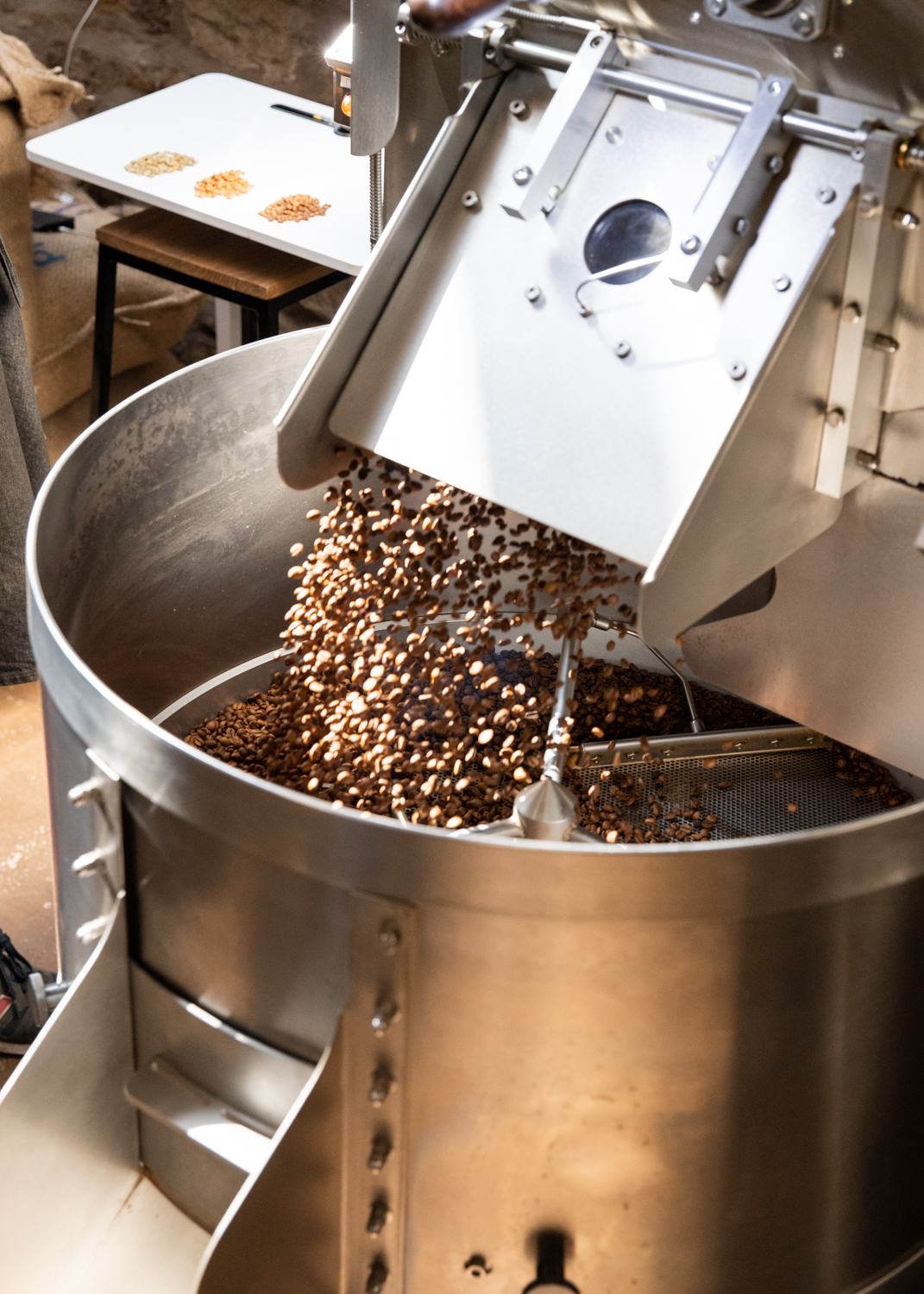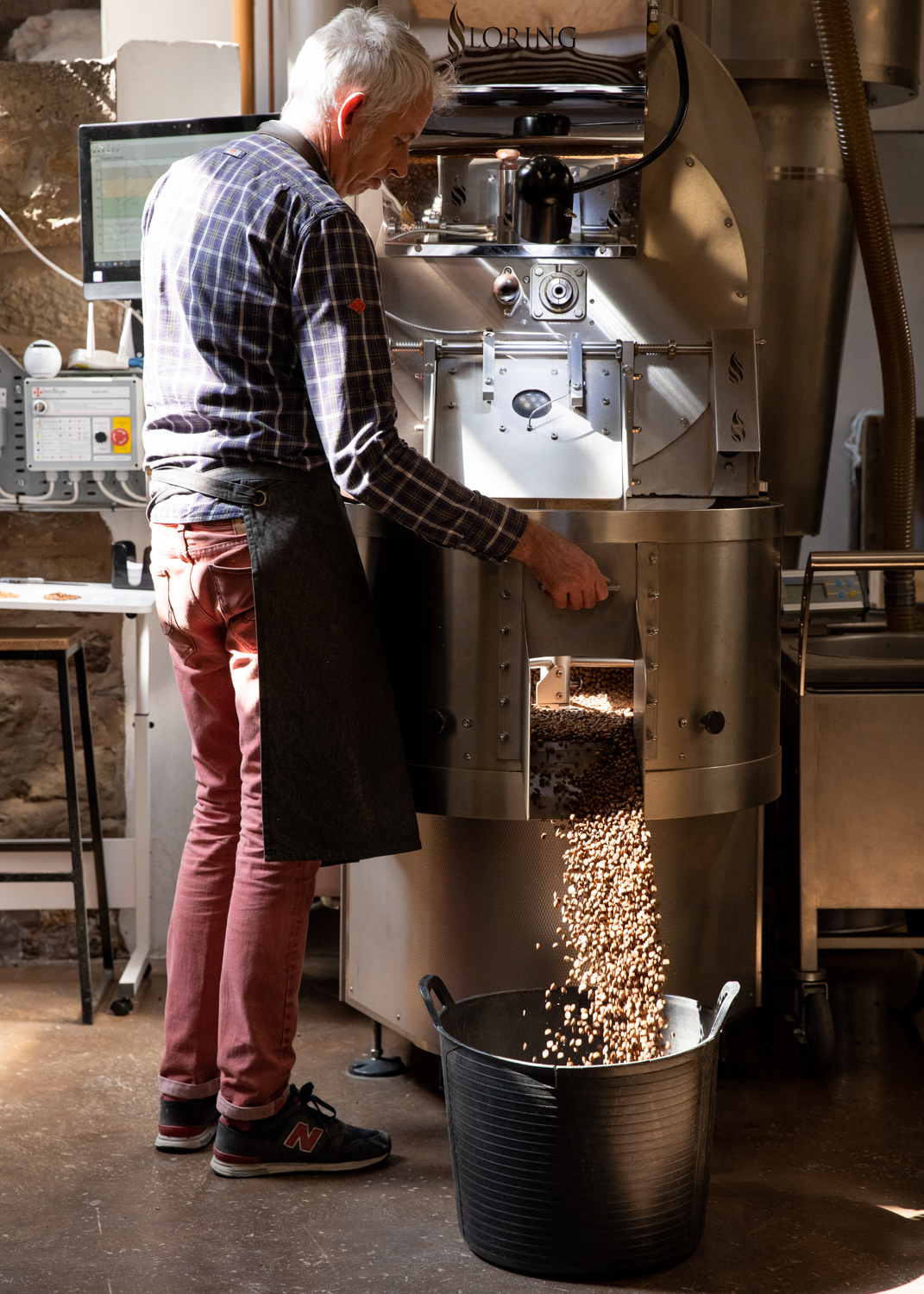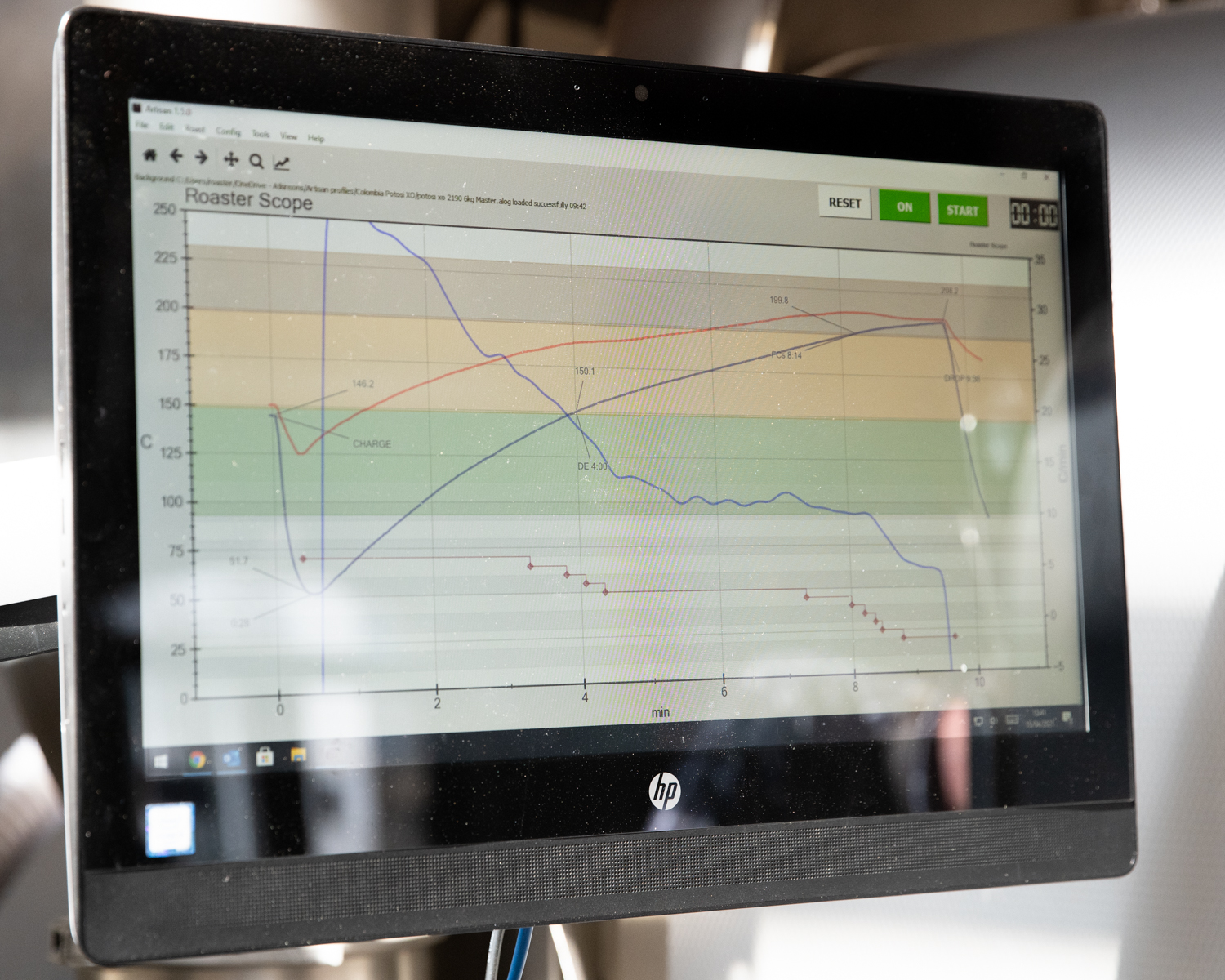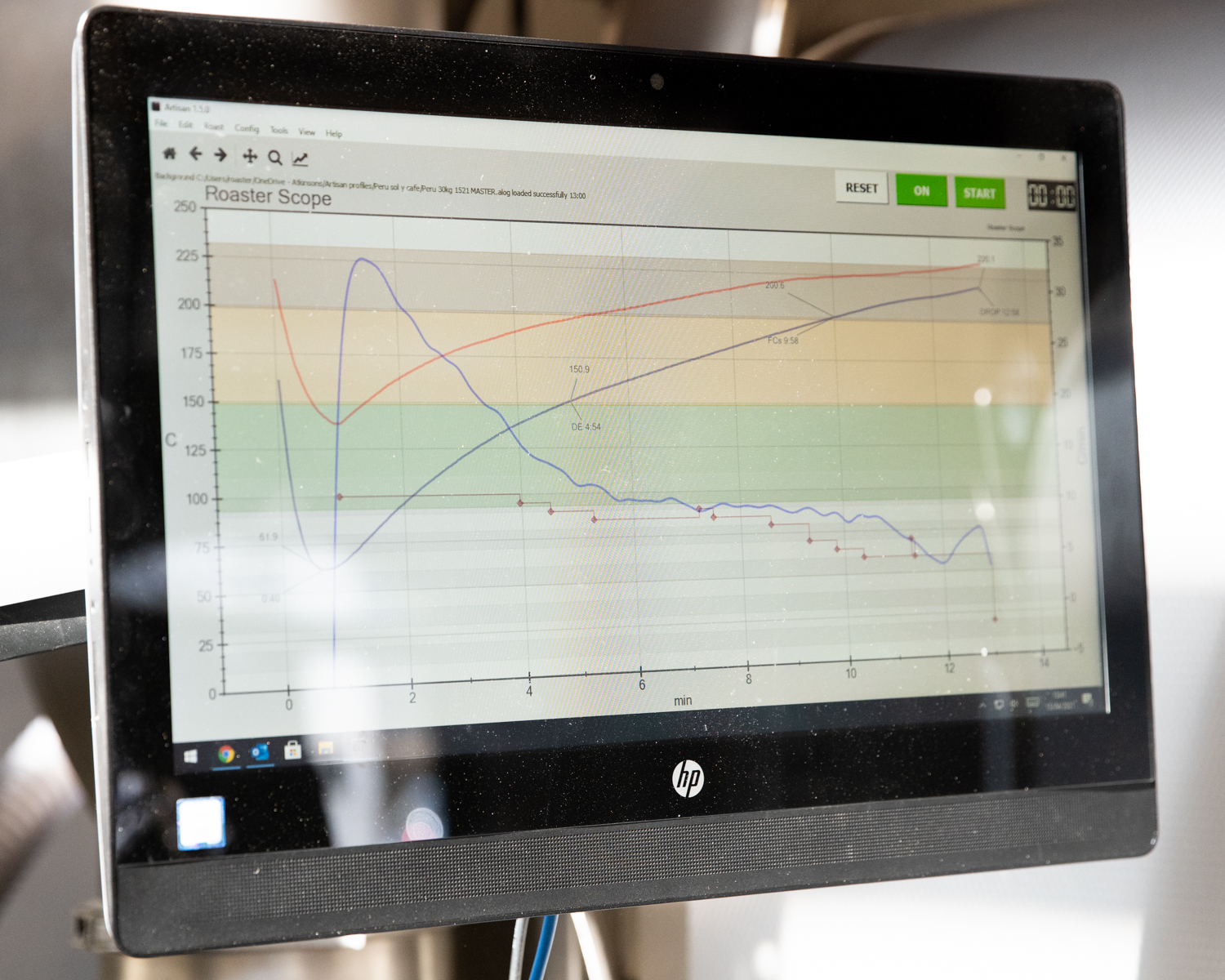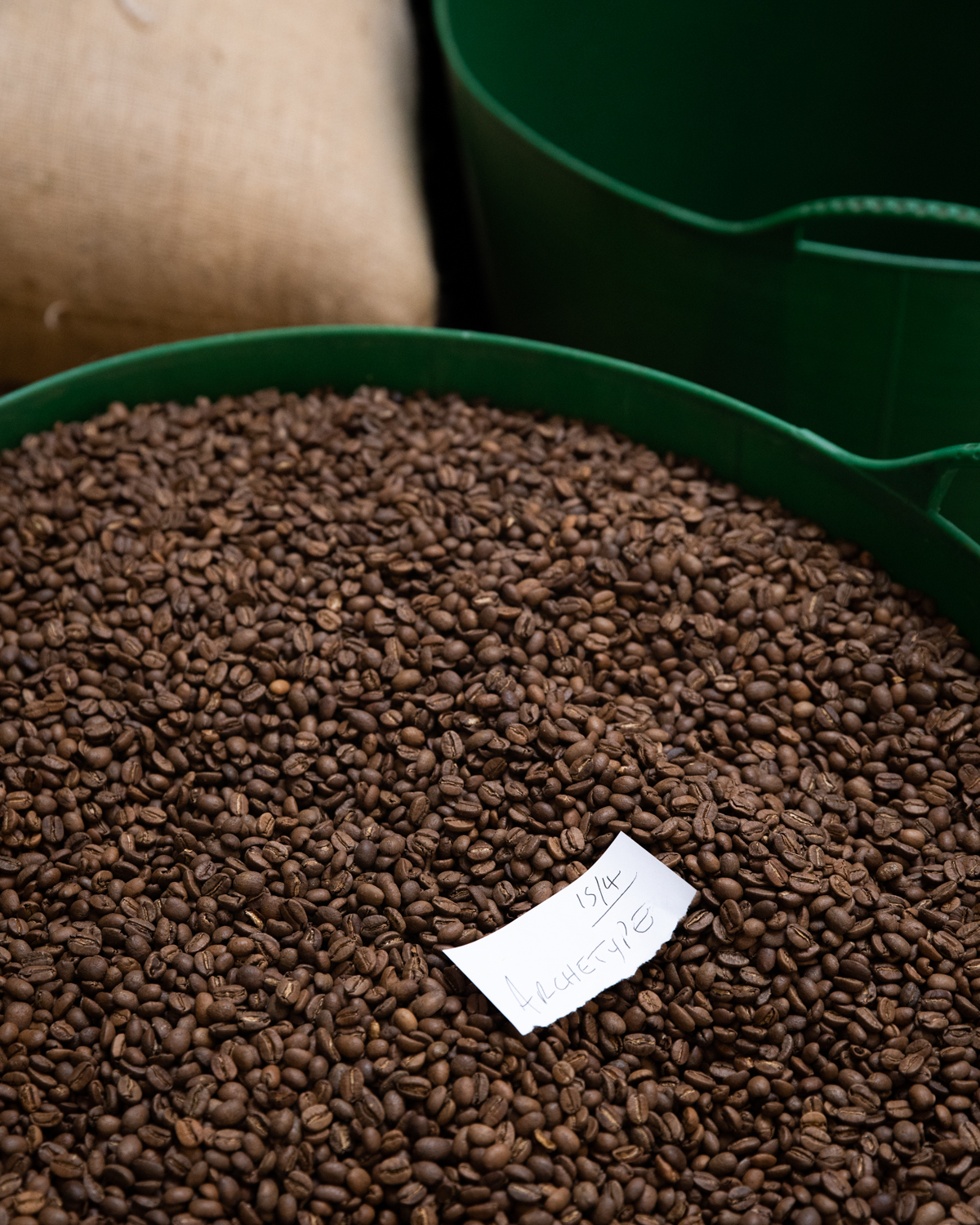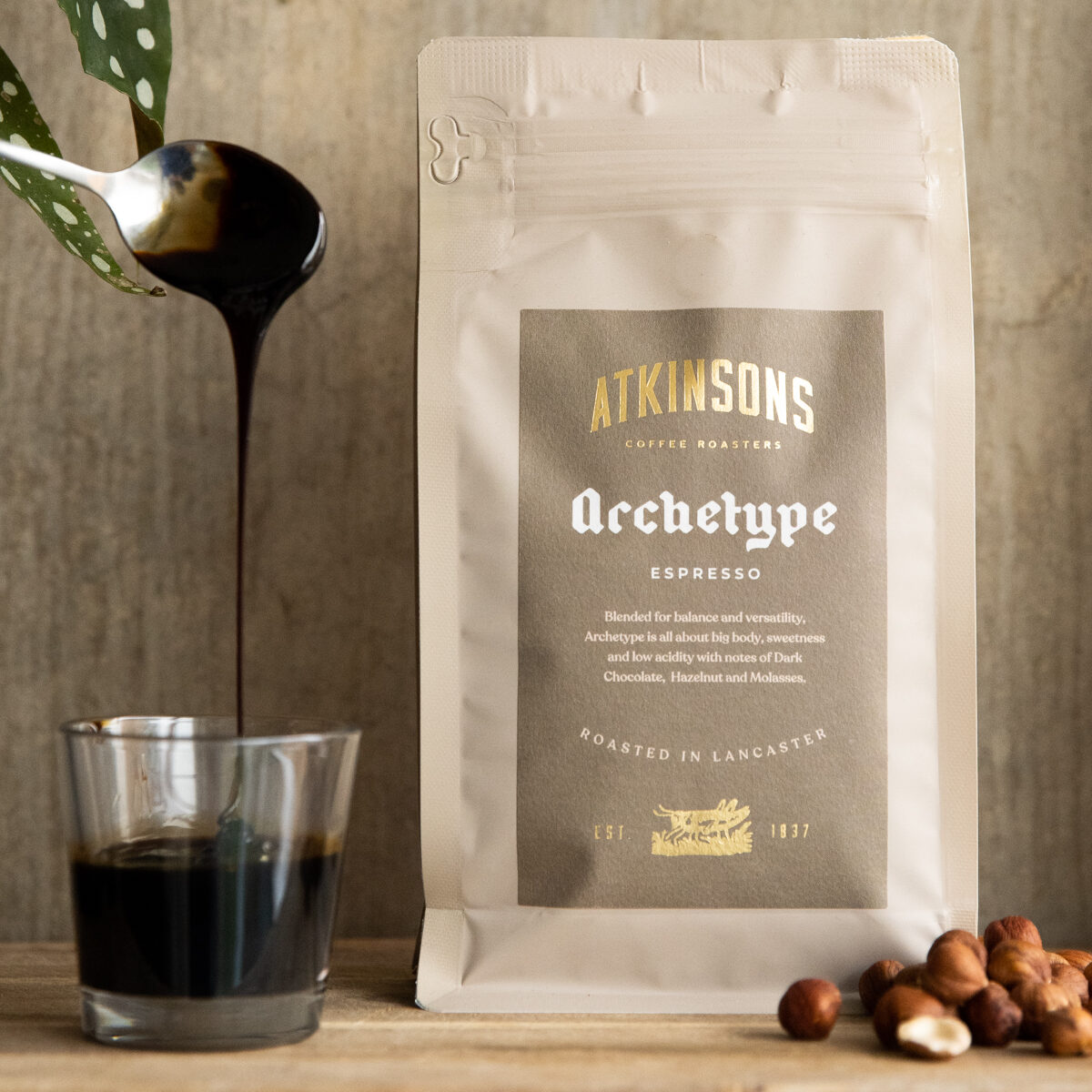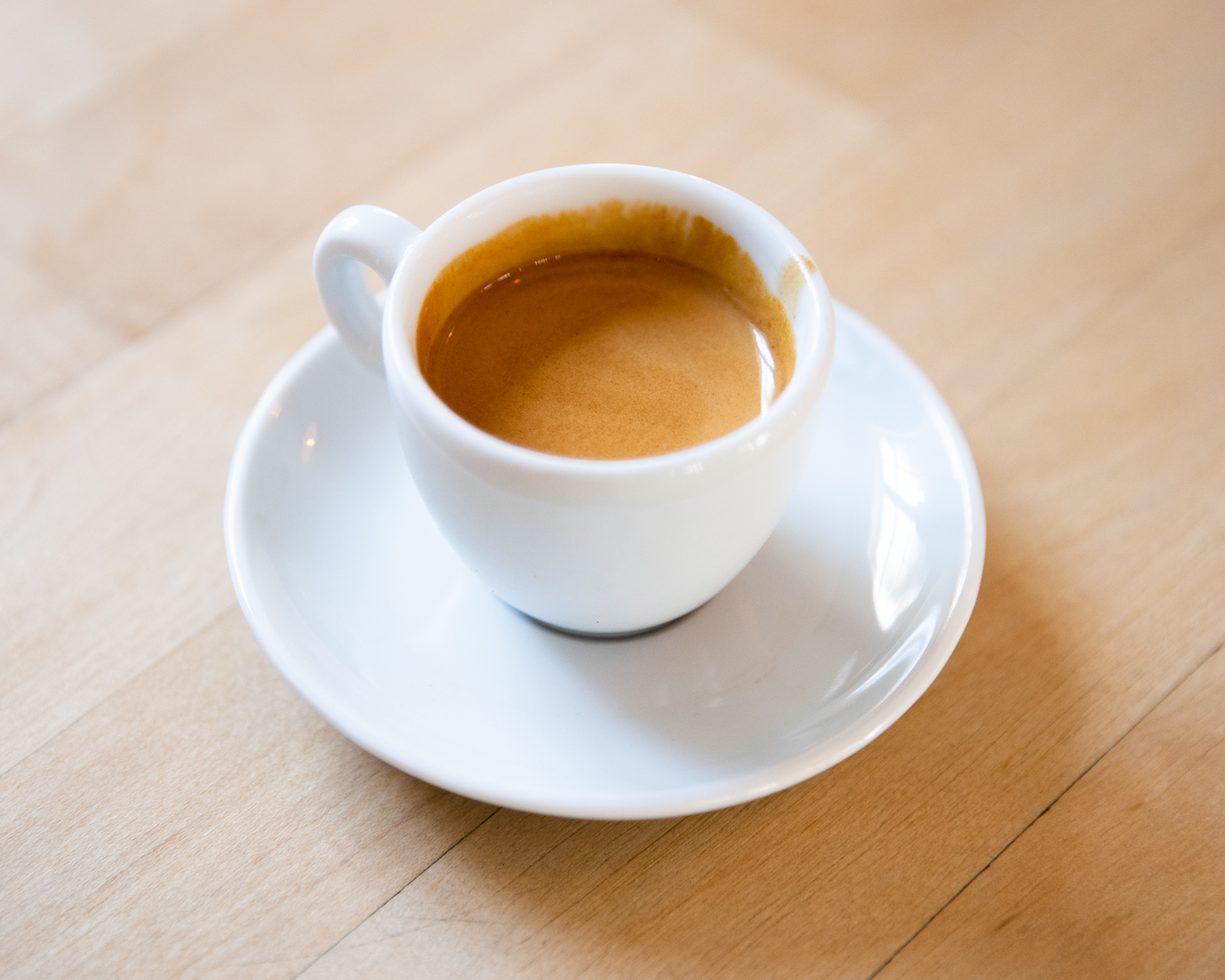HOW TO FIND THE RIGHT ROAST
Coffee Roasting Terminology
Coffee roasting terminology can sometimes be a bit of a grey area among roasters, baristas, and consumers. How we describe the way coffee is roasted can help give us an idea of how it’s going to taste and what brew method might best suit that coffee. So what should you look for when buying your coffee? Here’s a quick run through some coffee roasting terminology, what it means and how we got here.
Light, Medium and Dark Roast
A roast degree can be referred to as light, medium or dark. This refers to the colour of the coffee when it has been roasted. Roasting to a higher temperature gives a darker roast degree. Generally speaking, coffees roasted light, medium or dark exhibit certain flavour attributes.
Light roasted coffees often have more acidity and floral and fruit notes with less body and often more flavour complexity. Roasted properly, a light roast can highlight natural attributes of a coffee’s terroir, altitude, varietal and process without developing flavours added by roasting.
Medium roasted coffees develop more sugar browning flavours such as caramel, nut, vanilla and chocolate. Some acidity is lost from roasting slightly darker but more body and a certain sweetness is brought out in return.
Dark roasted coffees loose most of the acidity in a coffee and some sweetness. Bitterness begins to take over as the dominant flavour and nuances in a coffees growing conditions are lost. This bitterness has the effect of giving a fuller body but sometimes at the cost of more interesting flavours.
Samples of coffee showing the different stages of a roast
Referring to roast degree in terms of light, medium and dark can help simplify things but it does come with some problems. By oversimplifying we can start to confuse the difference between roast and strength. Technically speaking, strength refers to a brewed coffee solution. A “strong” coffee can be achieved by brewing a light roasted coffee, just by altering your brew recipe. By using the term light, medium and dark, those who enjoy a “strong” coffee are less likely to try a light roast, missing out on a whole load of interesting coffees out there.
Another problem with referring to coffee roast degree by colour is that there are different ways of arriving at the same colour (or end temperature). A light coffee that is roasted slowly can lose its acidity and have a baked, grassy taste. Alternatively a medium/dark roast coffee can be roasted too quickly, getting it to the right colour but without developing as much sweetness and body. This is where profile roasting comes in.
Coffee Roasting for Filter and Espresso
With the rise of 3rd and 4th wave coffee culture sweeping across the UK around the late noughties there has been a boom in connoisseurship level among coffee amateurs and professionals. Driven by a passion for the product, independent cafes started to include a coffee offering focused more on provenance, trying to harness a coffee's innate characteristics.
Over time, roasters and baristas started to favour lighter roasts which better emphasised a coffee's character from origin. These light roasts worked well for filter but often resulted in a sour espresso. Dark roasts were already common for espresso but roasting darker too fast lost some of the coffees more nuanced flavours.
The end temperature of an espresso roast will be a few degrees higher than for filter but not necessarily by much. Likewise the colour might not be that much darker. A fast dark roast could result in an under roasted inside of the bean.
A longer time spent in development also increases the solubility of a coffee, making it easier to extract for espresso. This is why you might have noticed us indicate our blends as Prototype, Archetype and Stereotype Espresso.
Filter roast with shorter development and roast time.
Right Image - Espresso roast profile with longer development phase.
How we achieve these profiles can be done in a number of ways, mainly by the way we apply heat. The same profile though, will not yield the same results from a different coffee. Freshness, bean density, moisture content, process and altitude are all factors that can affect how a coffee behaves when roasted.
It is the job of the roaster and the green bean buyer to decide what coffees will suit a certain roast profile and get the best out of each coffee. But what if you like espresso roast coffee as a filter? Espresso roast coffees will of course still work fine as a brewed coffee. In fact our Archetype Espresso, one of our best sellers, tastes great as Cafetière with a full velvety body, and dark chocolate sweetness.
Our new CO2 Neutral Packaging.
Whatever the roast style, it’s always our aim to bring out the best in a coffee and our flavour descriptions should give you an idea of what to expect. We believe there is no right or wrong when it comes to drinking your coffee but we hope this post helps add to your lexicon of coffee roasting terminology and hopefully helps when choosing your next bag.
